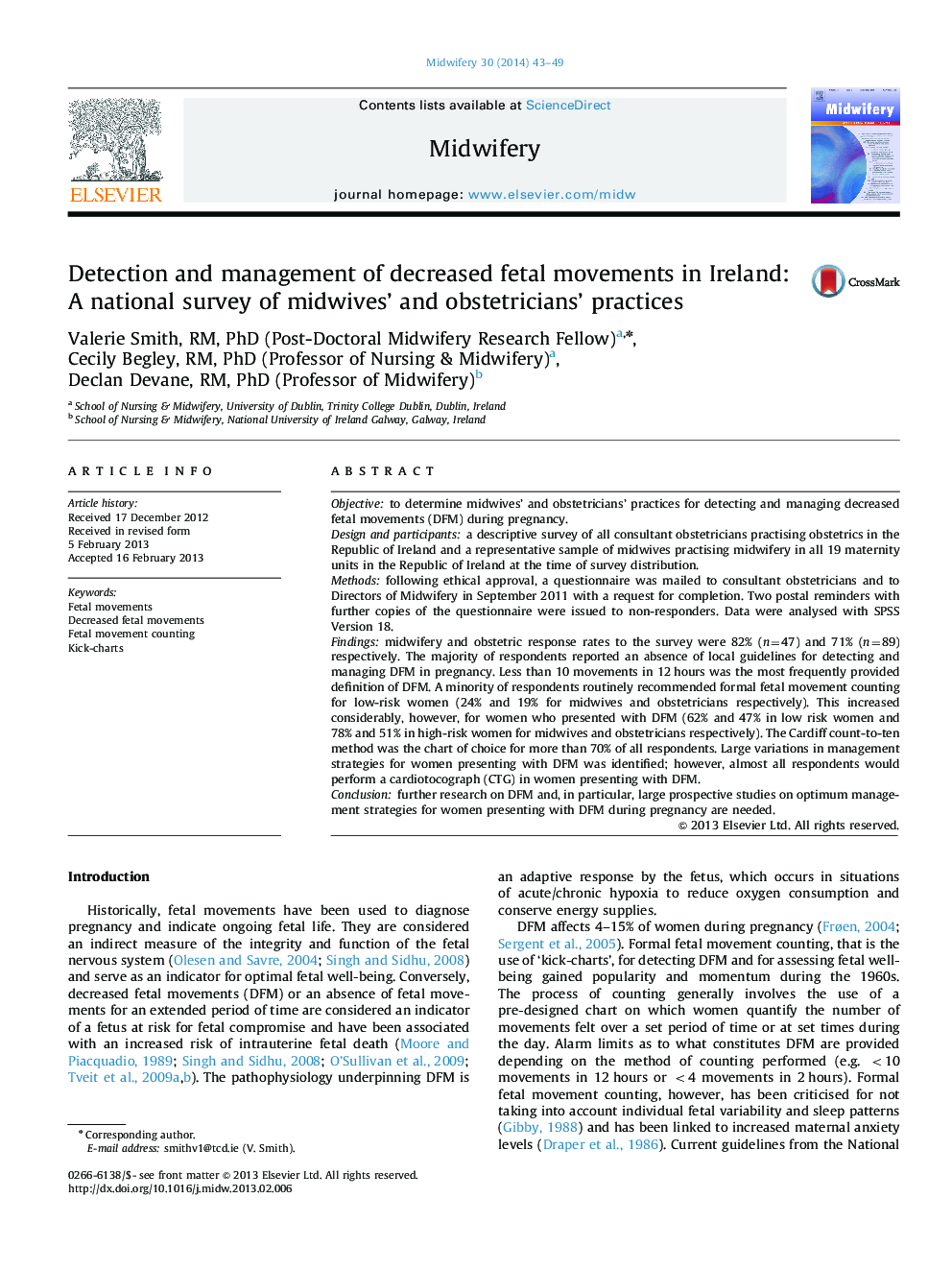| Article ID | Journal | Published Year | Pages | File Type |
|---|---|---|---|---|
| 1084586 | Midwifery | 2014 | 7 Pages |
Objectiveto determine midwives' and obstetricians' practices for detecting and managing decreased fetal movements (DFM) during pregnancy.Design and participantsa descriptive survey of all consultant obstetricians practising obstetrics in the Republic of Ireland and a representative sample of midwives practising midwifery in all 19 maternity units in the Republic of Ireland at the time of survey distribution.Methodsfollowing ethical approval, a questionnaire was mailed to consultant obstetricians and to Directors of Midwifery in September 2011 with a request for completion. Two postal reminders with further copies of the questionnaire were issued to non-responders. Data were analysed with SPSS Version 18.Findingsmidwifery and obstetric response rates to the survey were 82% (n=47) and 71% (n=89) respectively. The majority of respondents reported an absence of local guidelines for detecting and managing DFM in pregnancy. Less than 10 movements in 12 hours was the most frequently provided definition of DFM. A minority of respondents routinely recommended formal fetal movement counting for low-risk women (24% and 19% for midwives and obstetricians respectively). This increased considerably, however, for women who presented with DFM (62% and 47% in low risk women and 78% and 51% in high-risk women for midwives and obstetricians respectively). The Cardiff count-to-ten method was the chart of choice for more than 70% of all respondents. Large variations in management strategies for women presenting with DFM was identified; however, almost all respondents would perform a cardiotocograph (CTG) in women presenting with DFM.Conclusionfurther research on DFM and, in particular, large prospective studies on optimum management strategies for women presenting with DFM during pregnancy are needed.
